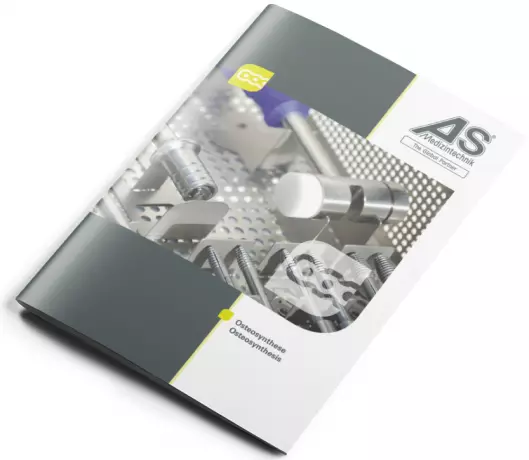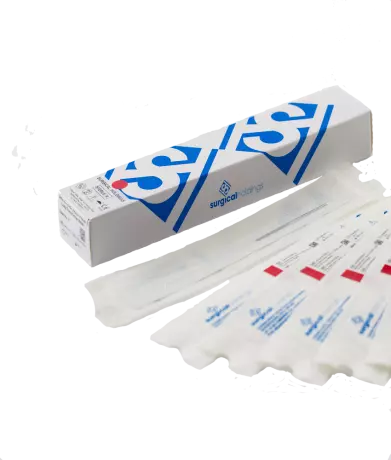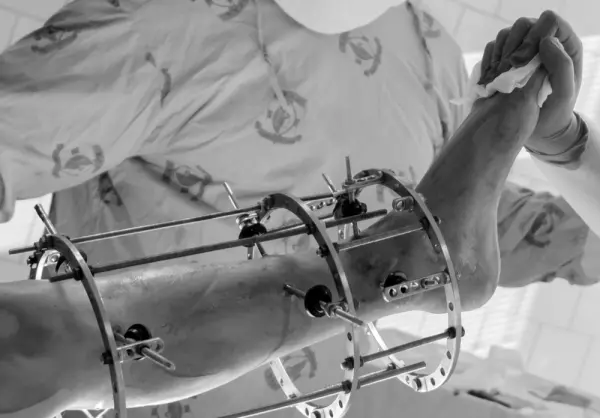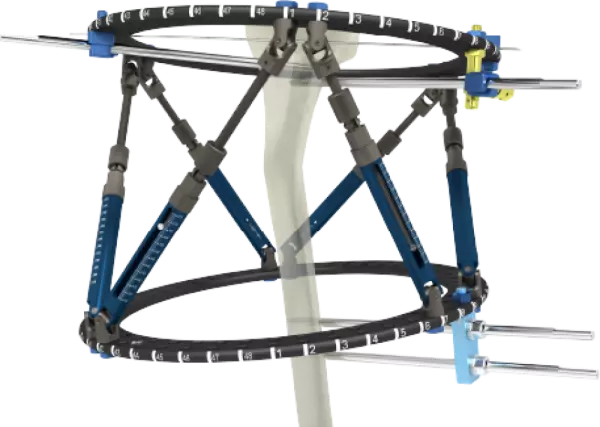
Instruments and implant systems for osteosynthesis
Plates and Screws for mini, small and large fragments are only a selection from our wide range. With...
Portal and digital medical technology fair of the largest MedTech cluster in Germany

Instruments and implant systems for osteosynthesis
Plates and Screws for mini, small and large fragments are only a selection from our wide range. With...

Not just a Kirschner wire... Our Kirschner wires are individually machined and brought to the hig...

Ring fixator according to Ilizarov
Almost 70 years of experience and well over 1 million cases treated speak for this success story....

Smart Correction® computer assisted hexapods
Smart Correction® is designed for the treatment of deformity corrections, open and closed fractu...

In OMF-surgery, stabilization systems are used to fuse bone segments. These devices are highly versatile and can be tested in both cadavers and simulated patients. The use of PMMA enables reproducibility and standardization of measurements. Several companies have developed their own osteosynthesis system. In this review, we will look at the pros and cons of different systems. We will also discuss the importance of choosing a system that is right for your situation.
The most common system used for bone-repair is the IS-PBSS. It is a biodegradable system that uses a titanium, flexible, and a biodegradable material. This method is commonly used in Le Fort I osteotomies and requires no additional surgical procedures. Its advantage is that it does not create burr holes. Using biodegradable osteosynthesis systems is a viable option for patients with bone-repair surgeries.
Unlike other methods, IS-PBSS is easy to perform and does not require complicated anesthesia. It uses a thin-walled PET Dacron balloon in varying sizes to fit the bone. The liquid monomer is injected through the balloon and conforms to the patient's bone shape. When the polymerization is complete, the light source activates the polymerization process, resulting in the hardening of the monomer.
Among the different osteosynthesis systems, IS-PBSS is the most popular and safest. IS-PBSS is most effective in osteolyses of solid tumors. It can be applied in patients with already occurring or impending fractures, where there is cortical erosion. It can be placed in patients with standard nails and can even be used in frail patients. It is also considered a valid alternative to resection in many cases.
Inion CPS has the highest mechanical properties in the study. It is the best option for people with traumatic injuries. This system has been proven to be effective and safe. It can be biodegradable and biocompatible. However, it is not biodegradable, and cannot be recycled. A biodegradable system is more biocompatible. Inion CPS is more stable. It can be biodegradable and have a longer lifespan.
The mechanical properties of osteosynthesis systems vary. One of the most effective types is the IlluminOss photodynamic bone stabilization system. It is a minimally invasive procedure that uses a balloon catheter and a monomer. The device is then filled with blue light and then adheres to the cortical bone. This is a relatively durable system that can be used in different situations. It is an excellent option for patients who suffer from fractures of the facial bones.
While IM stabilization systems can provide the best biomechanical support for fractures, titanium can cause significant artifacts on advanced imaging studies. For instance, the LINS system is an implantable graft that is used to stabilize the femur after surgery. The LINS system is the best option for patients with IM fractures because it is FDA-approved and has minimal side effects. The LISS can help patients with severe distal femur injuries.
Become a digital exhibitor yourself in the online portal of the largest and best-known MedTech cluster region in Germany and inform the world of medical technology about your products and services as well as about news, events and career opportunities.
With an attractive online profile, we will help you to present yourself professionally on our portal as well as on Google and on social media.